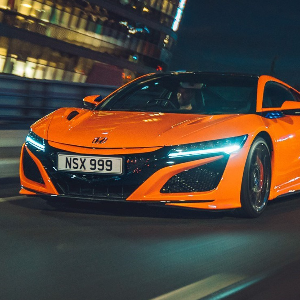
McLaren's mainstream supercar goes topless, but has it lost any of its prowess? We find out.
If you’ve ever fantasised about driving a drop-top supercar in a vivid hue, we’re willing to bet that it was a beautiful sunny day in your vision of automotive nirvana. Well, we’ve got the car – it’s even bright yellow, we’ve got some amazing roads, but what we also have is some typically British weather. Storm clouds and standing water means there won’t be a lavishly hyperbolic segment on how the McLaren 720S Spider can complete its transformation in 11 seconds, however, these ever so English conditions did present a very realistic test for a supercar that resides in the UK.
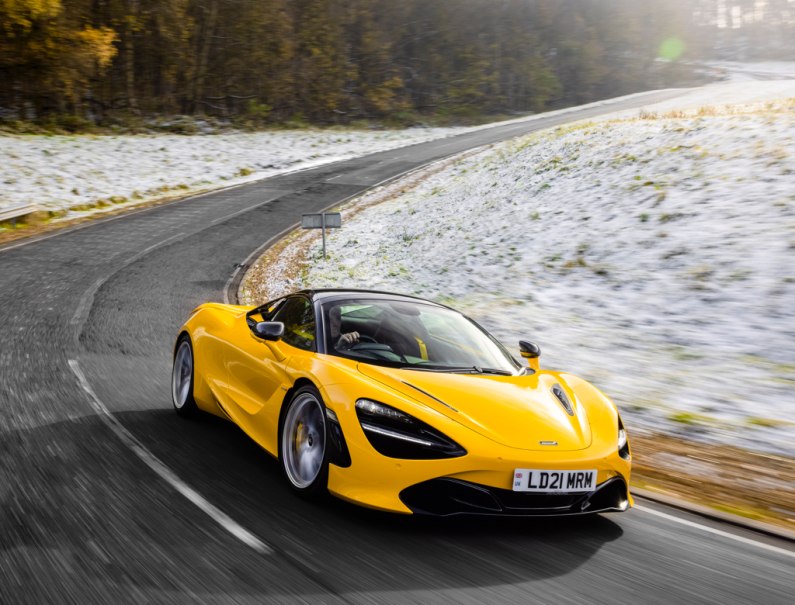
Beads of water trickled, pooled, and cascaded down the aerodynamically dictated teardrop silhouette of our 720S Spider. In fact, the dramatic contrast of a moody sky and this example’s Volcano Yellow finish made for quite the sight. The 720S was a controversial design when it launched back in 2017 with its unusual ‘eye sockets’ sheltering an intricate lighting signature, but the passage of time has only served to enhance its looks. From a distance, it has a river pebble-like design, smooth and uninterrupted, but step closer to reveal detailed channels and ducts that serve this car at speed. With the roof up the Spider appears very similar to the coupe, but also features a set of unique glazed flying buttresses.
The McLaren 720S Spider is built around a carbon monocell structure – a bit like an F1 car’s monocoque – for strength and rigidity. Open those rising dihedral doors to be granted access to the inner sanctum, a space that’s relatively easy to clamber into thanks to low sills. Alcantara and leather lines the cabin of this car, a specification enhanced by contrasting yellow stitching. You sit low in the chassis, plumbed into the machine with a simplistic steering wheel aimed squarely at your chest. Visibility is impressive for this calibre of car with narrow pillars, low cowls, and plenty of glass. Instrumentation is detailed and digital, while infotainment is taken care of by a portrait touchscreen. There’s a pleasing number of toggle switches and physical buttons in this driver-centric cockpit.
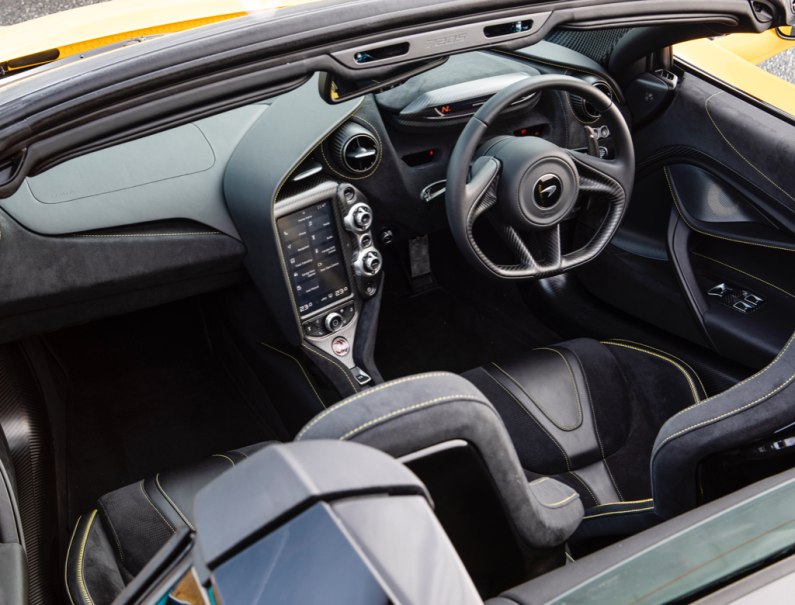
Sat behind the driver is a dormant nuclear weapon, sleeping until someone decides to light the fuse. The twin-turbocharged 4.0-litre V8 engine is a prime piece of performance engineering that produces 710bhp and 770Nm of torque. On a day when it’s not raining cats and dogs, this supercar is capable of running 0-62mph in just 2.9 seconds and a top speed reaching 212mph. While it’s a shame that this 720S won’t be stretching its considerable legs in these conditions, we’ve experienced this exceptionally stable car at speed on track before. Its competence and balance is remarkable, but in the extreme wet it does at least give us the chance to dissect the nitty-gritty of how this car behaves.
The engine erupting into life with a shriek of revs before setting into a baritone idle leaves no doubt that the business of combustion has begun. In contrast to its dramatic awakening, the 720S Spider is actually one of the easier supercars to drive at a more sedate pace. As mentioned, visibility is excellent and the controls have just enough weight to them for your actions to require a deliberate motion. The ‘active’ panel that controls the engine’s mood and the chassis’ state of mind can be configured individually, but with everything in comfort, the intricate suspension does a great job of absorbing road imperfections. Life is easy in the 720S. Don’t get us wrong, it still has a sense of occasion, but there’s no reason you couldn’t take it to Tesco and fill its 150-litre frunk.
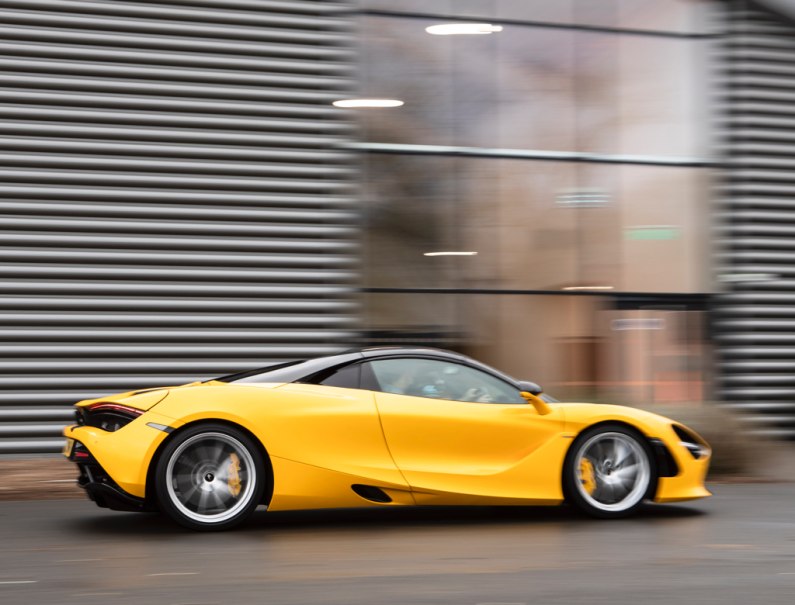
Stepping up the pace in Sport really brings the engine to life thanks to a considerably more responsive throttle. In these conditions, trying to translate that torque to the Tarmac was always going to be a limiting factor, but the precision of the pedal box is a great asset when it comes to tempering your acceleration. A full-bore sprint to 120mph required being ginger with our right foot, some short-shifting, and even then the car managed to break traction in fifth gear. Respect is the key with the combination of car, condition, and tyres.
The whole powertrain is something of an engineering marvel with the driving experience being propelled onwards by a never-ending wave of torque. Once you get past an initial whiff of turbo lag, the surge of acceleration is relentless, racing into triple figures with boundless enthusiasts. A special mention has to go to the seven-speed dual-clutch transmission that fires with the mechanical predictability and immediacy of a Browning’s rifle.
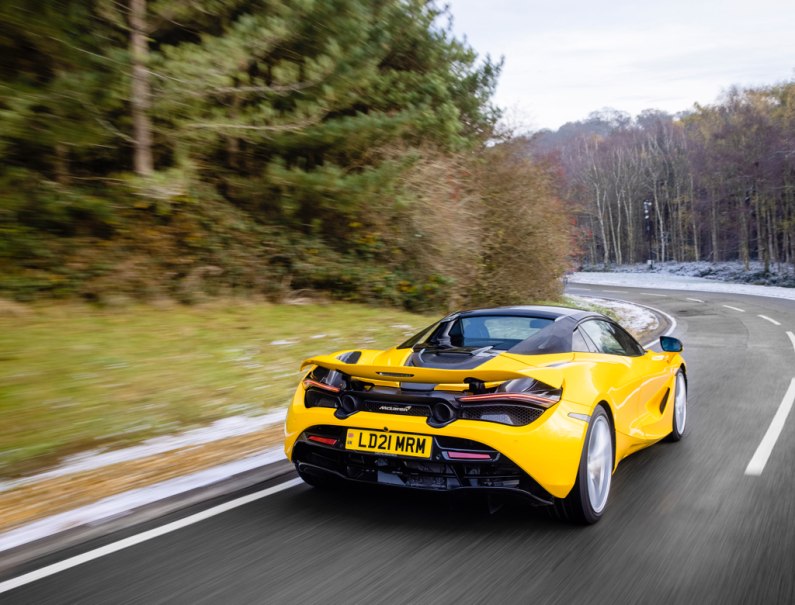
Hitting more alpine roads, the McLaren reveals itself to be a beautifully tactile machine. Inputs are met with rapid responses, and delicious feedback coming through the hydraulic steering continuously keeps you up to date with what’s going on beneath you. The confidence this car gives through its chassis and precise steering allows you to positively assassinate apexes. In an environment where you have to rapidly read the road at speed while assessing the car’s state, a machine with such poise and balance is essential – your actions need to be instinctive, the car’s responses telepathic. The McLaren 720S Spider gets these nuances of man-machine connection spot on.
While an all-wheel drive performance car would undoubtedly cover ground quicker in the wet, the sense of connection you get in the McLaren is exceptionally rewarding. Scything through meandering corners, putting those easily modulated carbon brakes to work, and feeling the car’s movement through your backside culminates in an intoxicating experience. This car provides an environment to challenge yourself.
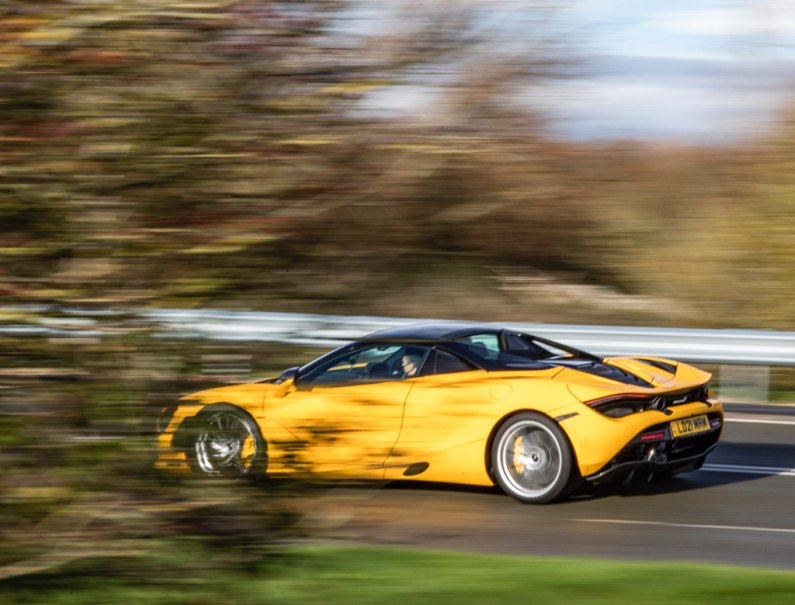
Coupe or Spider? Well, thanks to the carbon monocell, the Spider requires no additional bracing. Net result, minimal additional weight and no reduction in chassis strength. Pushed to its extremes you’d probably find the coupe to be marginally sharper as physics dictates, but the Spider is far from a compromise.
Down came the rain, but this Spider was anything but washed out.
